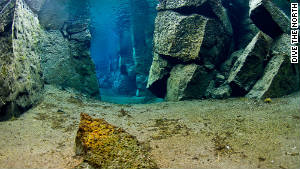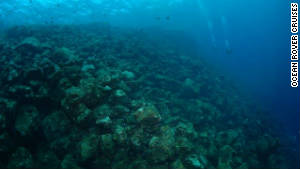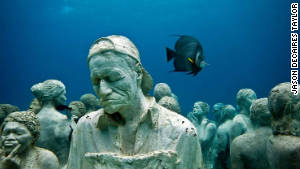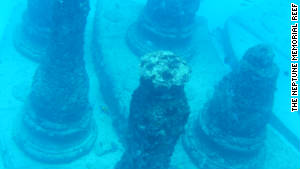By Ted Alan Stedman
They’re weird, wild and bizarre. Many call them ugly — so ugly that they’re, well, fugly.
Which is part of the reason divers love these denizens of the deep, those mesmerizingly wonderful marine species that would seem utterly alien if they weren’t in fact real.
The undersea world is replete with all things beautiful. So to mix it up, we offer our unsightly picks that add another wow-factor dimension to the diving experience.
Take the challenge to see if you can find these creatures that only a diver could appreciate.
TASSELED ANGLERFISH
Melbourne, Victoria, Australia
To untrained eyes, the tasseled angler (also tasseled frogfish) gets overlooked, dismissed as another algae-covered rock due to the long filamentous appendages that completely envelop its rotund body. Using its superior camo, Rhycherus filamentosus attracts prey by deploying its long dorsal spine tipped with a glowing, bacteria-charged “lure†before inhaling catches with its voluminous mouth.
Bizarre as it is, this tousled creature is exemplary for its resourceful evolutionary adaptations that scientists think occurred between 100 million to 130 million years ago. One of more than 200 anglerfish species, the tasseled is endemic to Australia, particularly the southern states of South Australia, Victoria and Tasmania, where temperate waters foster dense kelp beds the species prefers. Sightings are not only common but also convenient. Where Mornington Peninsula separates Melbourne’s Port Phillip Bay from the roily Bass Strait, shore and boat divers are privy to tasseleds at Blairgowrie Pier. Considered the best pier/muck dive on the peninsula, the kelp-shrouded site is a virtual marine lab of sponges, soft corals, nudibranchs — and the obscure stealthy predator that’s fished these waters for millennia.
>When to Go Anglerfish are present throughout the year. Strong tidal currents make Blairgowrie Pier a slack-water dive. Consult tidal charts and confer with a dive operator beforehand.
>Operator Aquability (aquability.com​.au) is a full-service dive shop located south of Melbourne in the suburb of Mentone, and offers guided dives throughout Port Phillip Bay.
>Price Tag Boat dives start at $56. Air fills and equipment rentals are available for independent shore divers.
STARGAZER
Moalboal, Visayan Sea, Philippines
With its toothy upturned maw, oversize head and bulbous wild eyes aiming skyward, the stargazer looks otherworldly — like an alien apparition worthy of a Steven Spielberg flick. Upward of 50 species comprise this Uranoscopidae family of perciform fish distinguished by eyes on top of their head. Found worldwide in tropical and temperate waters, this strange critter is a benthic bottom dweller that buries itself in the sand to ambush prey that stray overhead. While most stargazer species hover in the 12-inch range, the giant stargazer (Kathetostoma giganteum) found in the waters of New Zealand can post a gargantuan 3-foot length. Add to its E.T. appearance the fact that it’s venomous, with two large poison spines that can also deliver electric shocks up to 50 volts, and the stargazer stands apart from nearly anything that slinks, swims or squiggles in the ocean.
In the Philippine dive mecca of Moalboal, stargazers are standard protocol for muck-diving sites inside the bay, says Chris White of Turtle Bay Dive Resort.
“We like doing this shallow muck dive at night when your flashlight suddenly illuminates this scary-face fish buried in the sand and staring up at you,†he says.
>When to Go Stargazers are observed year-round. Peak diving months are November and December, and continue to June.
>Operator Turtle Bay Dive Resort (turtlebaydiveresort.com), located in Moalboal on the island province of Cebu, offers daily dives in Moalboal Bay.
>Price Tag Two-tank guided boat dives run $65. Through September, seven nights, all meals, airport transfers plus 10 guided boat dives start at $859 per person.
RED-LIPPED BATFISH
Galapagos Islands, Eastern Pacific
You might think of the red-lipped batfish as the sad clown of the underwater world. Its frowning, pouty red lips look as if the creature went gonzo with makeup to compensate for its homely hatchet face. And there’s the rhinolike protrusion housing its illicium, the fleshy extension that enables it to “fish†for prey, as do other anglerfish. Did we mention it’s a terrible swimmer? Together with its flat, batlike body and propensity to “walk†the ocean floor with pectoral fins, it’s no wonder Mother Nature Network dubs them among “13 of the ugliest animals on the planet.â€
Yet Ogcocephalus darwini is a fascinating deepwater species found only in the Galapagos, and prize sightings are for the taking, says live-aboard operator Peter Hughes.
“We visit three sites where they’re nearly guaranteed, like Punta Vincente Roca. This is a deep, dark, beautiful dive, and the red-lipped batfish is nearly always found on the sand at a depth of 75 feet,†he says.
Hughes advises divers to get low on the sand and approach them slowly or they’ll spook and swim away — awkwardly.
>When to Go Batfish are sighted year-round. Most divers prefer the “Garua†cold/dry season from July to November, when whale sharks congregate.
>Operator Peter Hughes’ DivEncounters operates the M/V Galapagos Sky (galapagossky​.com), a 100-foot luxury live-aboard that visits all the top dive sites year-round, including reliable batfish sites.
>Price Tag Seven-night cruises with four dives per day and three land excursions begin at $5,494 per person.
REEF STONEFISH
Cairns, Great Barrier Reef, Australia
To our anthropomorphic sensibilities, Synanceia verrucosa — aka reef stonefish — is as fugly as they come. Resembling an encrusted rock or lumpy coral, it can have splotchy patches of yellow, brown, orange, gray and red, which add to its superb camouflage — and ugliness. But there’s another aspect of its macabre physiology that puts it on our list: its danger to humans. Not only are reef stonefish venomous and the most widespread species of the stonefish family, but it is the world’s most venomous fish. The fleetingly fast carnivorous bottom dweller is armed with 13 dorsal-fin spines, each with two venom sacs producing an extremely lethal toxin that attacks both the cardiovascular and neuromuscular systems. Most recorded deaths involve humans stepping on the creatures in shallow reefs of the Indo-Pacific and Red Sea.
Naturally, with this kind of marine mojo, reef stonefish are a much-sought check-off for cautious divers. One of the best reliable havens is along the Great Barrier Reef at Steve’s Bommie, where captivating caves, canyons and coral gardens belie the reality that these menacing-yet-mesmerizing creatures are literally underfoot and nearly everywhere.
>When to Go Sightings of stonefish occur year-round. Best viz is from August to December.
>Operator Diving Cairns (divingcairns.com​.au) is located in Cairns, Queensland, gateway to the Great Barrier Reef.










 Subsea telemetry acoustic transceivers used in offshore oil operations (Illustration: Nautronix)
Subsea telemetry acoustic transceivers used in offshore oil operations (Illustration: Nautronix) Michael Stocker on Alaska Bowpicker
Michael Stocker on Alaska Bowpicker